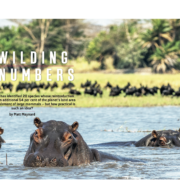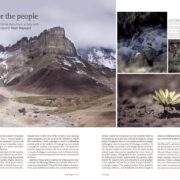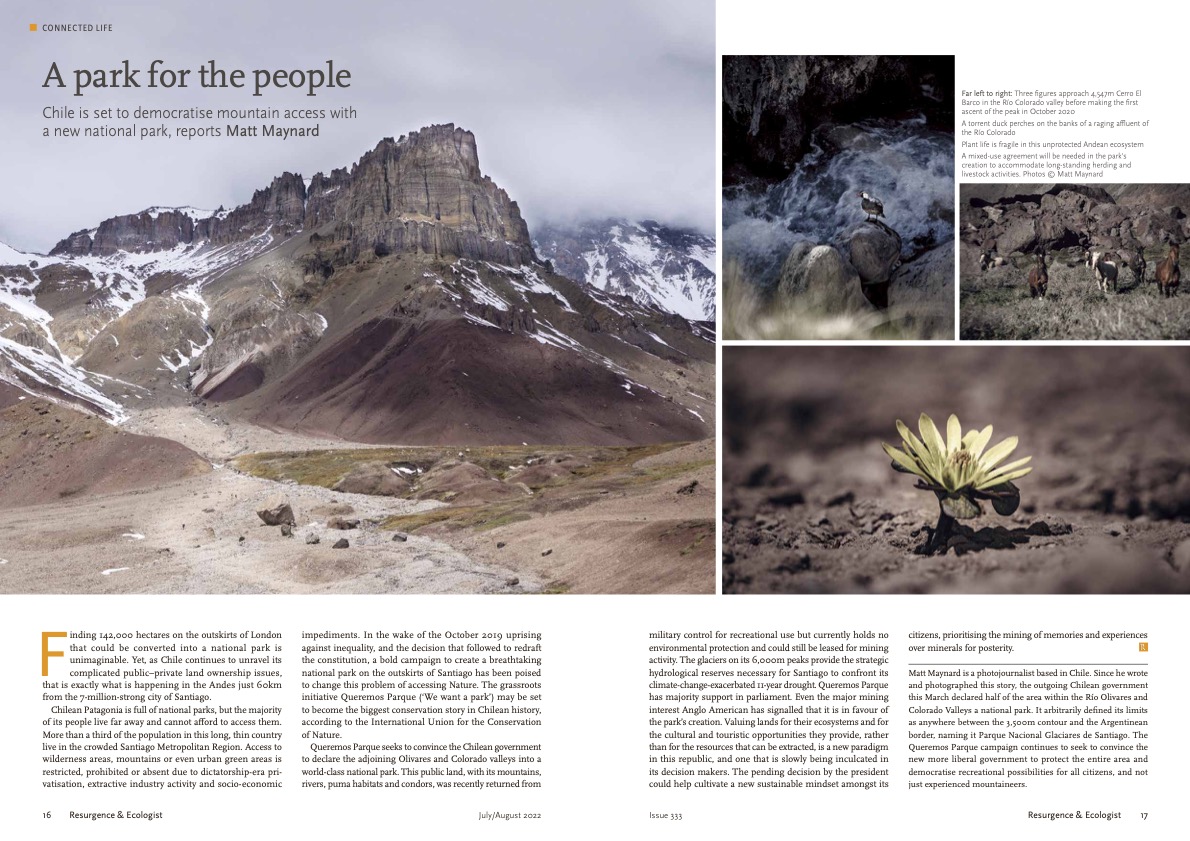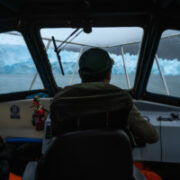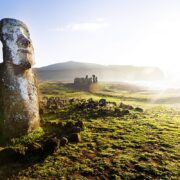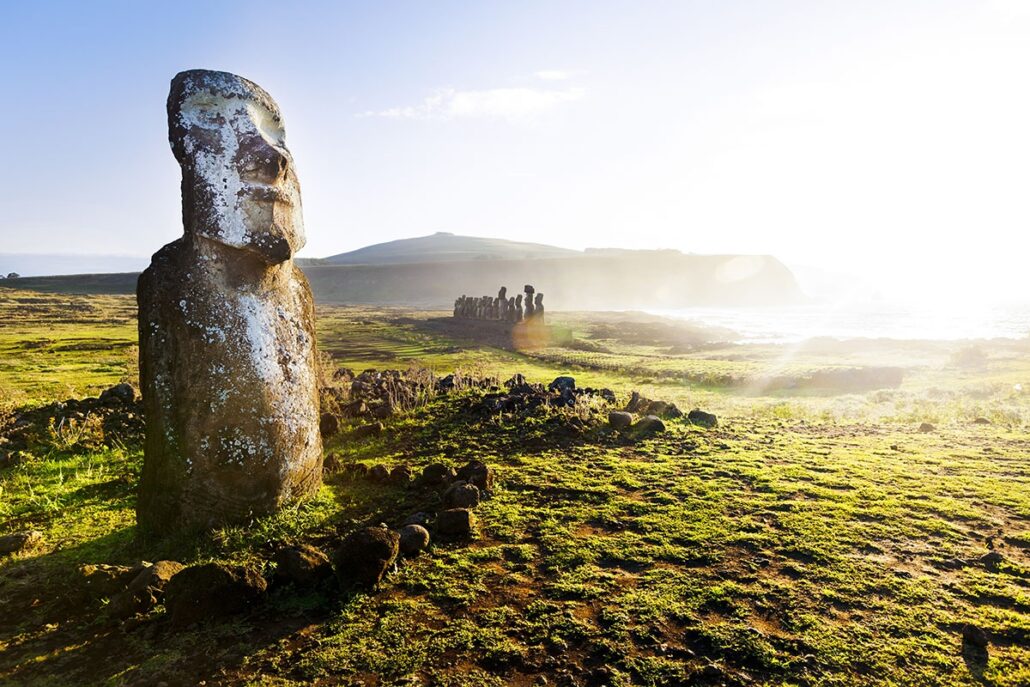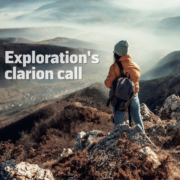A Park for the People / Resurgence and Ecologist Magazine
/in 2022 Publications, Environment, Just Published, Photo and feature packages, Writing Commissions/by Matt-MaynardFor the July / August issue of Ecologist and Resurgence Magazine I told the story and captured photos of potentially Chile´s greatest conservation story to date. The feature unpacks our successful expedition to the previously unclimbed Cerro Barco and unpacks how the move to make the Olivares and Colorado valleys a national park, would democratise mountain access for the 7million citizens of Chile´s captial Santiago.
Iceberg Hustlers / Geographical Magazine
/in 2022 Publications, Adventure, Environment, Just Published, Just Snapped, Photo and feature packages, Writing Commissions/by Matt-MaynardThe following is an extract from my feature story for the June 2022 print edition of Geographical, telling the madcap story of iceberg acquisitions. I researched and photographed this feature in Chilean Patagonia, following leads to South Africa, Iowa and the Arabian Peninusla.
The clag is down and the icebergs loom out of the dark fjord. Our captain cuts the outboard motor and we glide silently through the grey water. The fibreglass hull grinds alongside a serrated frozen slab. It sounds like a kayak being shredded in a sawmill. ‘No pasa nada,’ he reassures us.
For the past hour, on our final approach to the San Rafael glacier, we’ve been increasingly sighting icebergs. Now, at the head of the fjord, we’re surrounded by them. In front of us, finally, is the ten-storey snout of the iceberg factory itself.
I had come to the Chilean Patagonian region of Aysén in February on the trail of the 19th-century iceberg hustlers. One hundred and seventy years ago, seamen from the port city of Valparaíso ventured 1,600 kilometres south to the relatively unexplored Patagonian territory. At the foot of this oceanic amphitheatre of ice, they lassoed their cargo and attached it to a tug. Round- up complete, they sailed out into the open sea, dragging their icebergs back up the Pacific coast for more than a month. Back at the dock, they unloaded the thousands of years old ice, which would be transported to breweries to refrigerate the city’s beer.
It sounded like the most fantastical cottage industry of modern history. I imagined piecing together a frozen- fingered, hemp-snapping, cargo-melting tale from the past. But then, as we drift ever closer to the glacier, our captain tips me off. Just ten years ago, he says, local police detained a clandestine cargo of icebergs extracted 160 kilometres south of here in Bernardo O’Higgins National Park. He pauses. A sound like an entire forest being snapped in half cracks across the water. A townhouse- sized slab dislodges from the glacier, depth-charging into the sea. The iceberg lorry, he continues, unrattled, was headed for the nation’s capital. He even knows the driver.
I sense that modern iceberg smuggling to make pisco sours for well-heeled Santiaguinos is a much better story. And it doesn’t stop there. By 2015, I discover, the contractor mentioned by the captain had formed Merchant and Exporter Patagonice Limited, a registered company dedicated to the extraction, transport and sale of icebergs. I find other companies, too, attempting to sell premium iceberg water in Chile and even to use it to make vodka in Canada. And then I hear about the modern iceberg haulers: about Abdulla Alshehi and the UAE Iceberg Project planning to bring an Antarctic iceberg twice the size of Wembley Stadium to the Gulf of Oman and the city of Fujairah.
The case of the disappearing deer / The Guardian Environment
/in 2022 Publications, Environment, Just Published, Photo and feature packages, Photography Commissions, Writing Commissions/by Matt-MaynardGlobal South Solutions / Geographical
/in 2021 Publications, Environment, Just Published, Writing Commissions/by Matt-MaynardCitizens of the global south have done the least to cause global climate change, but are at the greatest risk from its bad tail effects.
This August and September I had the honour of speaking to seven leaders, scientists and activists from Bolivia, Brazil, Easter Island (Chile), the Democratic Republic of Congo, Madagascar, East Timor and Indonesia.
Each of them told their own countries story of how climate change is biting, but there was an underlying theme to all the interviews I carried out. Developing nations are being called on by the global north to preserve their forests to help reduce global emissions and develop on a different pathway to the denuded and exploited landscapes of the global north. But the developed nations are not willing to foot the bill for this mitigation of their own pollution.
The 4000 word story ran in the special COP26 November issue of Geographical magazine. You can read a full online version here.
Taking the ego out of adventure / Geographical
/in 2021 Publications, Adventure, Environment, Just Published, Photo and feature packages, Writing Commissions/by Matt-MaynardI wrote this feature story for @geographical_magazine recently, asking what expectation we should have of modern explorers in the wake of the climate and environmental crisis.
I got to interview both Ernest Shakelton’s and Neil Armstrong’s biographers about what role historical explorers of land, sea and space felt they had to report on its problems as well as its beauty on their return to civilisation.
I then turned to today’s explorers with the help of my friends at @shefadvfilmfest to ask if modern explorers are bringing back stories about our troubled planet as much as selfies.
The conclusion was that planetary advocacy by today’s adventurers is still in a nascent state, but the public appetite is growing. I think we are going to see a lot more expeditions into the world’s wild places in the coming years that put the planet rather than the self at the centre of the story.
GEOEXPLOREJUNE2021_GT 12.14.07 pm
—
#adventureactivism #enviroadventures#adventure #adventureforourplanet#enviornmentalism #freelancewriter
Pages
Categories
- 2015 Publications
- 2016 Publications
- 2017 Publications
- 2018 Publications
- 2019 Publications
- 2020 Publications
- 2021 Publications
- 2022 Publications
- 2023 Publications
- Adventure
- Cultural Events and Travel
- Environment
- Event photography
- Just Published
- Just Snapped
- Magazine covers + recent DPS shots
- Photo and feature packages
- Photography Commissions
- Review
- Running / Race Report
- Upcoming Article
- Writing Commissions
Archive
- May 2023
- April 2023
- August 2022
- June 2022
- May 2022
- April 2022
- November 2021
- September 2021
- June 2021
- April 2021
- March 2021
- January 2021
- August 2020
- July 2020
- May 2020
- April 2020
- February 2020
- December 2019
- October 2019
- September 2019
- August 2019
- July 2019
- June 2019
- May 2019
- April 2019
- March 2019
- January 2019
- December 2018
- November 2018
- October 2018
- September 2018
- August 2018
- July 2018
- June 2018
- May 2018
- April 2018
- March 2018
- February 2018
- January 2018
- December 2017
- November 2017
- October 2017
- September 2017
- August 2017
- July 2017
- June 2017
- April 2017
- March 2017
- December 2016
- November 2016
- October 2016
- September 2016
- August 2016
- July 2016
- June 2016
- May 2016
- April 2016
- March 2016
- February 2016
- January 2016
- December 2015
- November 2015
- October 2015
- September 2015
- August 2015
- July 2015
- April 2015
- March 2015

